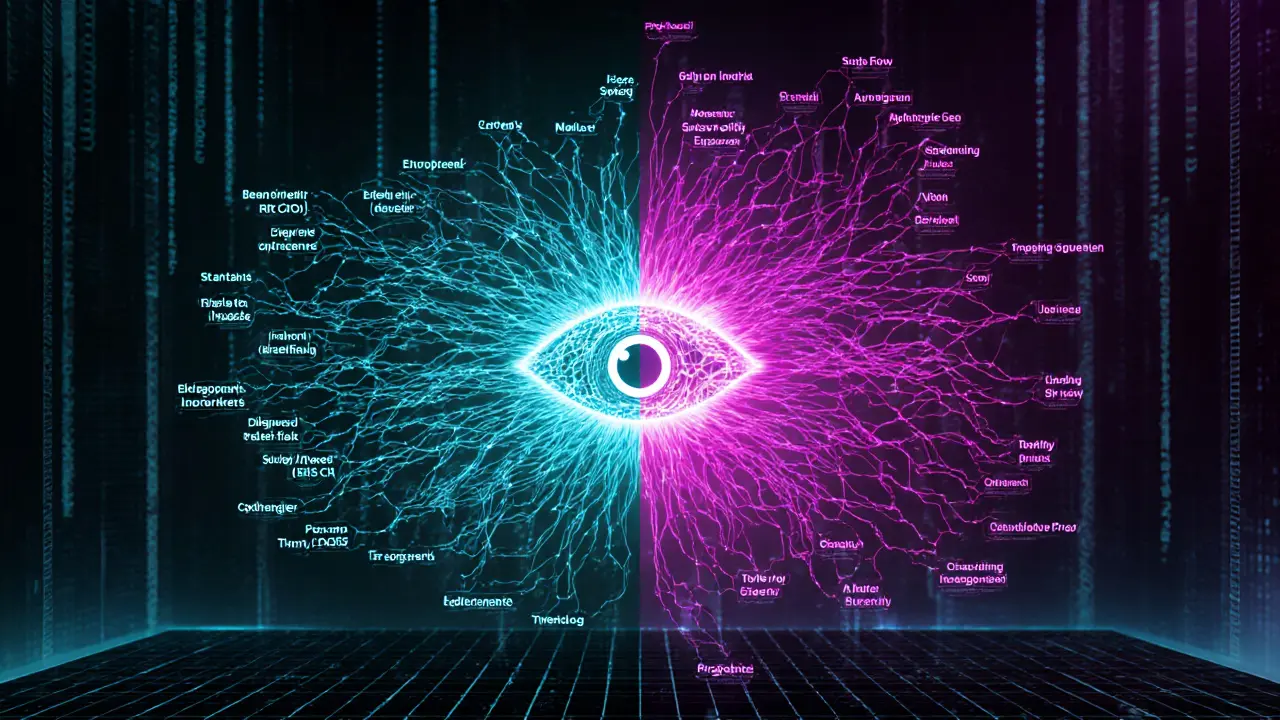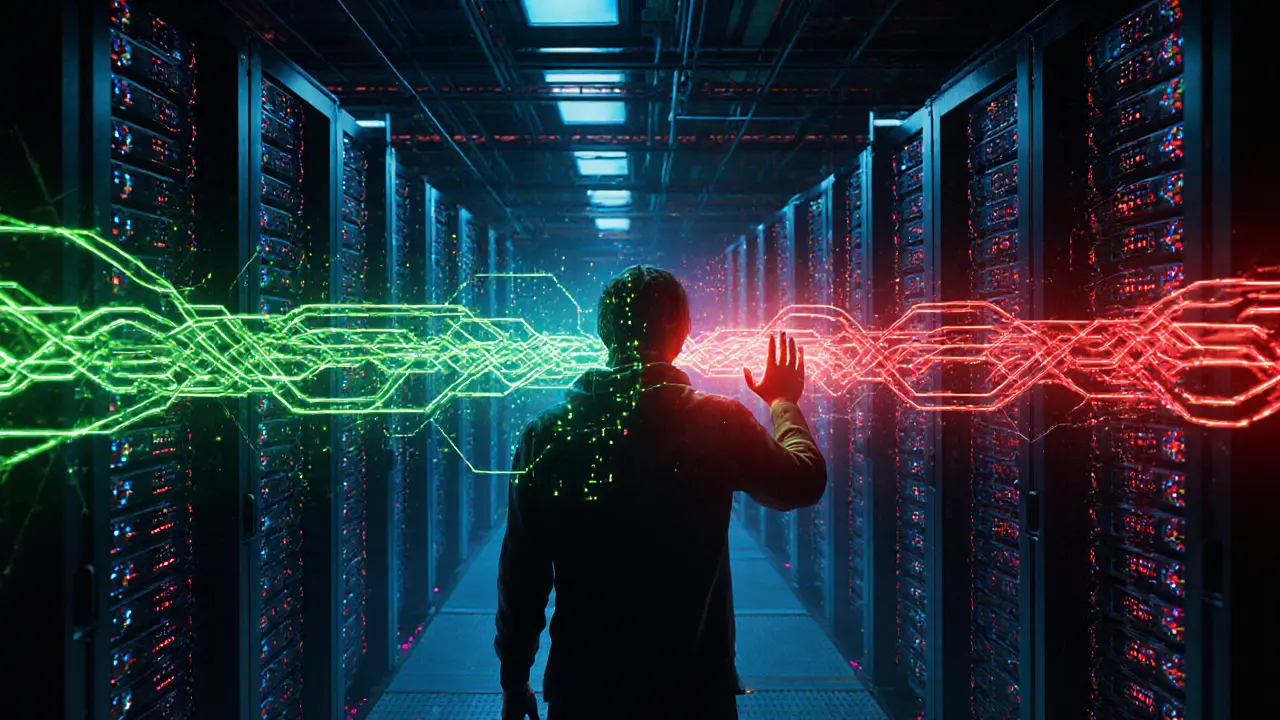Investors are constantly looking for ways to stay ahead of the next crypto scam, and the most dreaded one is a Rug Pull - a malicious maneuver where developers ditch a project after raising funds, leaving token holders with worthless assets. As the ecosystem matures, so do the defenses. The next wave of rug pull protection isn’t a single tool, but a layered system that blends code analysis, transaction monitoring, AI, and community vigilance.
Understanding Hard vs. Soft Rug Pulls
Not all rug pulls look the same. A hard pull is sudden - the liquidity pool is emptied in minutes, and the token price crashes to zero. A soft pull, on the other hand, unfolds over weeks or months. Scammers may keep the project seemingly alive, release a few updates, then quietly stop development and let the token lose value. Key signs include:
- Liquidity removal spikes - especially on platforms like Uniswap or Raydium.
- Developer wallets transferring large amounts to exchanges.
- Uneven holder distribution - a few wallets control most of the supply.
RPHunter: Dual‑Graph Detection Engine
Published in 2025, RPHunter combines static code risk graphs with dynamic token flow behavior graphs. It builds a Semantic Risk Code Graph (SRCG) from the smart‑contract source, flagging functions like selfdestruct or unrestricted transferFrom. Simultaneously, it creates a Token Flow Behavior Graph (TFBG) that maps transaction networks, spotting sudden liquidity sweeps or abnormal token movements.
The two graphs feed a Graph Neural Network, and an attention‑fusion layer merges the insights. In tests on 645 manually verified rug pulls, RPHunter hit 95.3% precision and 93.8% recall, yielding an F1 score of 94.5%. Deployed live, it identified over 4,800 malicious tokens with 91% precision - a clear proof point for its scalability.
Token Sniffer and Automated Smart‑Contract Audits
Another first‑line tool is Token Sniffer an AI‑driven platform that scans contract bytecode, liquidity status, and holder distribution. It produces a safety score from 0 to 100; scores above 80 signal a relatively clean project, while below 50 raise red flags. The scoring is transparent, letting even non‑technical users gauge risk at a glance. Token Sniffer’s strength lies in rapid, cross‑chain analysis. Whether you’re looking at ERC‑20, BEP‑20, or Solana SPL tokens, the engine parses the contract, checks for known malicious patterns, and reports suspicious liquidity movements.
Complementary Platforms: GoPlus Security, Elliptic, and Token Metrics
While Token Sniffer focuses on contract code, GoPlus Security extends coverage to address‑level threats and dApp vulnerabilities. It flags malicious addresses, suspicious token approvals, and potential phishing contracts. Blockchain analytics firm Elliptic provides behavioral detection of scammer wallets across multiple chains. By analyzing transaction patterns - rapid outflows, clustering with known illicit entities, and cross‑chain fund hopping - Elliptic can automatically label a wallet as high‑risk before a dump occurs. For investors who want a broader view, Token Metrics delivers AI‑powered Trader and Investor grades that embed security factors. Its Investor Grade scores weigh audit status, code quality, team credibility, and liquidity health, providing a single number that reflects both upside potential and rug pull risk.

How to Combine Tools: A Practical Workflow
Think of each platform as a filter in a funnel. Here’s a step‑by‑step routine you can adopt:
- Initial Screening - Run the token through Token Sniffer. If the safety score < 50, skip.
- Code Deep Dive - Feed the contract into RPHunter for dual‑graph analysis.
- Address & dApp Check - Use GoPlus Security to ensure no known malicious addresses are involved.
- Behavioral Monitoring - Add the token’s wallet activity to Elliptic’s watchlist for real‑time alerts on suspicious transfers.
- Overall Rating - Review Token Metrics’ Investor Grade for a final risk‑adjusted valuation.
Real‑World Example: The Solana Raydium V4 Liquidity Sweep
In early 2025, a series of memecoin projects on Solana’s Raydium V4 saw rapid inflows followed by sudden liquidity extraction. Scammers would provide 100% of the pool’s liquidity paired with SOL, let traders buy in, then remove the liquidity once the SOL side grew, profiting from the price jump.
RPHunter’s SRCG flagged the contract’s ability to call withdraw without timelocks, while its TFBG detected a sharp liquidity drop from 100% to 0% within an hour. Token Sniffer gave those tokens a safety score of 32, and Elliptic flagged the developer wallets for large outbound transfers to Binance. The combined alerts gave investors a clear early‑warning, allowing them to exit before the dump.
Community‑Driven Defense: Reputation & Reporting
Technology alone can’t stop every rug pull. Community platforms that aggregate user experiences-like Reddit’s r/CryptoScams or Discord watchdog groups-provide fast, crowd‑sourced intel. When a member spots a suspicious token, they can flag it on a reputation ledger; algorithms then weight the report based on the reporter’s historical accuracy. This decentralized reputation system creates a network effect: the more people report, the quicker the signal spreads, and the higher the chance that automated tools will prioritize analysis of the flagged token.
Regulatory Support and Global Cooperation
Governments are stepping in, too. The California Department of Financial Protection and Innovation maintains a Crypto Scam Tracker that lists known fraudulent platforms. Though jurisdictional limits exist, such databases are increasingly shared across borders, feeding into the data lakes used by RPHunter and Elliptic. Future frameworks will likely standardize a real‑time API where regulators, exchanges, and security platforms can exchange watchlists, making the ecosystem collectively more resilient.
Best Practices for Investors: The Human Layer
Even with the best tools, disciplined investing remains vital. Here are three habits to embed:
- Never chase FOMO. Verify the project’s code, audit, and liquidity before buying.
- Track developer wallet movements. Large transfers to exchanges within 48 hours of a token launch are a major red flag.
- Engage with the community. Transparent teams answer AMA questions, publish roadmaps, and have verifiable team members.
Future Outlook: Adaptive AI and Integrated Scoring
The next generation of protection will likely feature fully adaptive machine‑learning models that retrain on new scam patterns without manual rule updates. Integrated scoring systems will merge code risk, transaction behavior, team credibility, and social‑media sentiment into a single risk index. Imagine a dashboard that shows a token’s “Rug Pull Likelihood” as a live percentage, updating as new data streams in. Such ecosystems will not only protect investors but also preserve space for genuine innovation-allowing trustworthy projects to stand out clearly amidst the noise.
| Tool | Primary Focus | Key Features | Precision (Reported) |
|---|---|---|---|
| RPHunter | Dual‑graph code & transaction analysis | SRCG + TFBG, GNN fusion | 95.3% |
| Token Sniffer | Smart‑contract safety scoring | Score 0‑100, liquidity check | ~85% (based on internal validation) |
| GoPlus Security | Address & dApp vulnerability lookup | Malicious address database, token approval audit | ~80% |
| Elliptic | Behavioral wallet detection | Cross‑chain tracing, AI pattern matching | ~88% |
| Token Metrics | Investor & trader grading | Security factors in Investor Grade, market analytics | ~90% (overall rating accuracy) |
Frequently Asked Questions
What exactly is a rug pull?
A rug pull is a scam where developers raise funds for a crypto project, then abandon it or withdraw all liquidity, leaving token holders with worthless assets.
How does RPHunter differ from other scanners?
RPHunter combines static code risk graphs with dynamic transaction flow graphs, using graph neural networks to fuse both perspectives. This dual approach catches scams that hide behind clean code but malicious transaction patterns, or vice‑versa.
Can I rely solely on Token Sniffer scores?
Token Sniffer is a great first filter, but it looks mainly at contract code and liquidity. Adding behavioral tools like Elliptic and RPHunter provides a fuller picture.
What warning signs indicate an upcoming liquidity pull?
Watch for sudden large withdrawals from the pool, a spike in developer‑wallet transfers to exchanges, and a rapid drop in total liquidity percentage within a short window.
How can community reporting improve security?
When users flag suspicious tokens, reputation algorithms prioritize those assets for deeper scans. The collective intel spreads quickly, giving everyone a chance to exit before a rug pull lands.







Comments
13 Comments
Marina Campenni
The layered approach you outlined makes a lot of sense, especially when combining static code analysis with real‑time transaction monitoring. By treating each tool as a filter, investors can progressively narrow down risk without being overwhelmed. It's also reassuring to see community reporting integrated into the workflow, as human intuition often catches subtle red flags that algorithms miss. Overall, this strategy feels both pragmatic and adaptable to future threats.
Irish Mae Lariosa
The comprehensive workflow you propose is undeniably thorough, yet it also raises concerns about accessibility for the average retail investor. While the dual‑graph analysis of RPHunter sounds impressive, the requirement to interpret graph neural network outputs is beyond most users' technical comfort zones. Moreover, relying on multiple platforms can quickly become cost‑prohibitive, especially when subscription fees stack up. The necessity of constantly updating watchlists across services like GoPlus, Elliptic, and Token Metrics introduces operational overhead that many small‑time traders might find daunting. In practice, the friction introduced by these layers could deter participation rather than enhance security. Additionally, the emphasis on liquidity monitoring presupposes that investors have access to real‑time data feeds, which are not always publicly available without premium APIs. The risk of false positives also cannot be ignored; flagging a legitimate project due to an anomalous but benign token transfer could lead to unnecessary panic selling. Therefore, while the multi‑factor model is theoretically sound, its practical implementation may require a more user‑friendly interface that abstracts away the complexity. Finally, the reliance on community‑driven reputation systems assumes a critical mass of knowledgeable participants, which may not exist for niche or newer blockchains. In short, the architecture is robust, but its efficacy hinges on balancing sophistication with usability.
Nick O'Connor
The emphasis on both static and dynamic analyses is a solid foundation; however, one must consider the latency inherent in real‑time monitoring-delays, even of a few minutes, can be exploited by sophisticated actors; integrating low‑latency data pipelines could mitigate this risk; additionally, cross‑chain interoperability adds another layer of complexity that should not be underestimated.
Hailey M.
Wow, this is like the Swiss Army knife of rug‑pull detection-so many gadgets, so much hype! 🙄 If I had a dollar for every tool listed, I could probably fund my own anti‑scam DAO. But seriously, the AI‑driven scores sound neat, as long as they don’t become another form of “expert‑only” black box. The community vibe is the real hero here; without us shouting about shady tokens, even the flashiest engine would miss the early warnings. 🤦♀️
Jason Zila
Integrating behavioral analytics with code audits creates a more resilient safety net, because it catches both pre‑deployment vulnerabilities and post‑deployment exploit patterns.
Cecilia Cecilia
The step‑by‑step guide is clear and concise; it helps even newcomers follow a solid vetting process without feeling overwhelmed.
Pierce O'Donnell
All these layers sound impressive, but they also feel like a barrier for anyone not willing to pay for every premium service.
Vinoth Raja
From a systems‑theory perspective, the multi‑modal fusion of semantic risk graphs with transactional flow graphs represents a high‑dimensional feature space that, when projected through a graph neural network, can capture emergent anomalous patterns not evident in isolated analyses; however, the computational overhead and the necessity for continuous retraining on evolving adversarial tactics warrant careful resource allocation.
Kaitlyn Zimmerman
One practical tip is to set up automated alerts on wallet address activity; this way you get a heads‑up before a large outflow occurs, giving you time to exit safely.
Bobby Lind
Great point!; setting alerts is a game‑changer; combine that with a quick glance at the Token Sniffer score, and you’ve got a solid early‑warning system!!!
Jessica Cadis
Community vigilance can’t be overstated; when seasoned members share intel about suspicious token behavior, it creates a collective shield that augments the technical safeguards.
Katharine Sipio
Indeed, fostering an informed community is essential; education and transparent communication empower investors to make prudent decisions.
Shikhar Shukla
While your suggestions are valuable, they assume a level of sophistication that many newcomers simply do not possess.
Write a comment